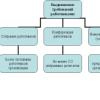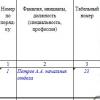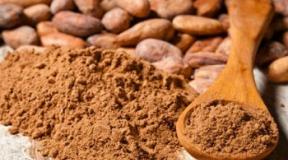Enalaprilat solution as an emergency aid for hypertension. What help Enalapril tablets and their analogues: indications and instructions for use, patient reviews Enalapril prescription in Latin tablets
Berlipril, Carlon, Renitek, Ednit, Enalapril, Enalapril-KMP, Enalapril maleate, Enam, Enap, Enarenal, Enat
Recipe
Rp: Tab. Enalaprili 0.01
D.t.d: No. 20 in tab.
S: 1 tab. 2 times a day inside


pharmachologic effect
Enalapril - antihypertensive drug, the mechanism of action of which is associated with inhibition of the activity of the angiotensin-converting enzyme, leading to a decrease in the formation of the vasoconstrictor factor - angiotensin-II and at the same time to the activation of the formation of kinins and prostacyclin, which have a vasodilating effect. Enalanril refers to "prodrugs", after its hydrolysis in the body, enalaprilat is formed, which inhibits this enzyme. Enalapril also has some diuretic effect associated with moderate inhibition of aldosterone synthesis. Along with a decrease in arterial blood pressure, the drug reduces the pre- and afterload on the myocardium in heart failure, improves blood circulation in the pulmonary circle and respiratory function, lowers resistance in the vessels of the kidneys, which contributes to the normalization of blood circulation in them. The duration of action of enalapril after a single oral administration is about 24 hours.
Mode of application
Enalapril is administered orally, regardless of the time of the meal.
When treating hypertension the initial dose of enalapril for adults is 0.01-0.02 g per day (one time). In the future, the dose is selected individually for each patient (usually a single dose of 0.02 g per day). With moderate hypertension, it is sufficient to prescribe 0.01 g of the drug per day.
Maximum daily dose is equal to 0.04 g.
In renovascular hypertension, enalapril is prescribed in smaller doses. The starting dose is usually 5 mg per day. Then the dose is selected individually. The maximum daily dose is 20 mg (once a day)
In heart failure, enalapril is prescribed starting from 0.0025 g, then the dose is gradually increased to 10-20 mg (1-2 times a day).
The duration of treatment depends on the effectiveness of therapy.
In all cases, if the blood pressure is too low, the dose is gradually reduced.
The drug is used both in monotherapy and in combination with other antihypertensive drugs.
Indications
Enalapril is prescribed for different forms arterial hypertension, including renovascular hypertension, including with low efficacy of other antihypertensive drugs.
The drug is also effective in congestive heart failure, ischemic disease heart, bronchospastic conditions.
Contraindications
Enalapril is contraindicated in case of hypersensitivity to angiotensin-converting enzyme inhibitors. The drug is not prescribed for children during pregnancy.
Side effects
When treating with enalapril, dizziness is sometimes possible, headache, orthostatic hypotension, nausea, diarrhea, muscle spasms, skin allergic reactions, in some cases - angioedema.
Release form
Tablets 0.005; 0.01 and 0.02 g (5; 10 and 20 mg).
ATTENTION!
The information on the page you are viewing was created for informational purposes only and does not in any way promote self-medication. The resource is intended to familiarize healthcare workers with additional information about certain medications, thereby increasing their level of professionalism. The use of the drug "" without fail provides for a consultation with a specialist, as well as his recommendations on the method of application and dosage of your chosen medicine.
Source: allmed.pro
The drugs belonging to the group of angiotensin-converting enzyme inhibitors began to be widely used in medical practice more than 40 years ago and to this day are among the most effective means to fight arterial hypertension... A widely used representative of this group is Enalapril. Instructions for use of Enalapril include detailed description indications, contraindications, method of administration of the drug, its side effects and other features of use.
Description and clinical properties
Enalapril is produced in tablet form for oral administration... Externally, the tablets have a white or grayish tint, available in dosages of 5, 10 and 20 mg. The product is packed in blisters. The carton contains 2-3 plates.
The main thing active substance drug - enalapril maleate. Its concentration in one tablet depends on the form of production, is 0.005, 0.01 and 0.02 g, respectively.
Indications for appointment
Instructions for the use of Enalapril include rather limited indications for use. This is explained by the specific and rather strong action medications, as well as a large list of side effects and contraindications.
In medical practice, the drug is prescribed to patients under the following conditions:
- various stages of hypertensive heart disease. The strength of the drug is adjusted by decreasing or increasing the dosage individually for each patient;
- arterial hypertension different etiology... Many years of experience show that it is Enalapril that is one of the most effective remedies in the fight against high blood pressure;
- chronic heart failure, as well as severe forms of pathology, in particular, during the recovery period after myocardial infarction to restore the functioning of the left ventricle of the heart;
- heart failure, accompanied by stagnant processes;
- Enalapril is used as a complex treatment for bronchospastic conditions;
- treatment of latent left ventricular dysfunction;
- Ischemic heart disease, accompanied by attacks of angina pectoris and other manifestations.
Mode of application
How to take Enalapril? The tablets are intended for oral administration, that is, ingestion. The drug should be taken with only clean water, since in alliance with juices, tea, coffee and other drinks, the remedy sometimes gives a negative effect.
To achieve a faster result, the tablet is allowed to be placed under the tongue, hold until completely dissolved. Usually this method is indicated for patients with hypertensive crisis for rapid decline blood pressure.
How much does the remedy last?
The therapeutic effect of the use of Enalapril occurs approximately 60 minutes after administration. It was during this period that the highest concentration of the active component of the drug in the blood was noted.
The duration of the antihypertensive action is about 24 hours. The duration of action of the drug increases in patients with heart failure, as well as in patients with kidney and liver diseases.
The effect of the drug is enhanced when taken twice. In most cases, the initial dose is from 5 mg, it is increased in stages with good tolerance of the drug.
How long does the medication work? The half-life is up to 5 hours. After this, the effect of Enalapril decreases slightly.
Intensifies healing effect the drug when used simultaneously with calcium antagonists and thiazide diuretics.
How many times a day
The number of doses and the dosage of the medication is determined by the leading physician based on the patient's history and complaints. Usually, in the role of monotherapy, Enalapril is prescribed 10–20 mg twice a day.
At complex treatment of this or that condition, the doctor prescribes 1 tablet in the morning or in the evening. The duration of treatment is individual for each patient.
Take before or after meals
Instructions for the use of Enalapril N and other brands of the drug do not indicate clear restrictions on taking the tablets before or after meals. The drug can be drunk both before meals and after meals. This practically does not affect therapeutic effect facilities.
At what pressure
Many patients are interested in at what pressure should the drug be drunk? The use of Enalapril is indicated by patients with even a slight increase in blood pressure against the background of essential hypertension, since this leads to a violation of the blood circulation of the brain and heart muscle.
In case of hypertension, it is recommended to take Enalapril with an increase in mercury column values of more than 120/90.
If the working pressure of a person is 100/60, the agent is used already when the indicators increase to 120/90.
Drug dosage
Annotation to Enalopril indicates that the remedy is taken before, after or during meals in the dosage prescribed by the doctor depending on the diagnosis. Treatment with the drug is carried out both as an independent and complex therapy.
Self-therapy
At the initial stages of treatment, patients are usually prescribed ¼ tablets of 20 mg. If within 7-14 days the effect is absent and the pressure does not decrease to normal levels, the dosage is gradually increased. In this case, the daily dose should not exceed 40 mg of the drug.
Comprehensive treatment
In the treatment of heart failure and other conditions, as a means of complex therapy, Enalapril is prescribed 2.5 mg once a day. Gradually, the dosage of the drug is increased, but no more than 2–2.5 mg every 7 days.
With chronic heart failure, the dosage is 2.5 mg in the first stages. The rate rises gradually, once a week by 2–2.5 mg.
In case of renovascular hypertension, the daily dose of the drug cannot exceed 20 mg. At the initial stage, the patient is shown taking ¼ pills twice a day.
Alcohol compatibility
Combining Enalapril and alcohol is prohibited in any dosage. This effect can cause a number of serious complications that are dangerous to the health and life of the patient. The fact is that against the background of taking alcoholic beverages, the effect of the drug may increase, which will lead to a severe form of arterial hypotension.
The compatibility of Enalapril and alcohol is highly undesirable for patients suffering from kidney and liver diseases. The negative consequences include persistent hypotension, disorders of the central nervous, respiratory, cardiovascular systems.
In addition, strong drinks increase the risk of development and the intensity of possible side effects of the drug. The patient may experience severe headaches, nausea, dizziness and other unpleasant manifestations.
In case of impaired renal function
In severe kidney pathologies, the drug is completely contraindicated. The use of the product can lead to dangerous complications incompatible with life.
At moderate dysfunction organ is allowed to use Enalapril in an initial dosage of 2.5 mg per day. The maximum amount of medication should not exceed 20 mg throughout the day.
With severe renal dysfunction, the patient is prescribed a drug in a dosage of 2.5 mg per day, the permissible daily amount of the drug does not exceed 10 mg.
When narrowing the renal artery of a unilateral or bilateral nature, Enalapril is not used.
If liver function is impaired
Liver diseases are a direct contraindication to the use of Enalapril. In extremely rare cases, a specialist may decide to prescribe a drug in limited doses if others medications do not give the desired therapeutic effect.
Prescribing in old age
For elderly patients, the drug is prescribed after a complete examination in a hospital setting. At the same time, it is necessary to monitor the dynamics of blood pressure indicators, urine and blood tests.
The initial dosage for patients over 65 years of age should be 2.5 mg. It is allowed to take no more than 10 mg of the drug per day.
Use during pregnancy and lactation
Instructions for use states that during the period of bearing a baby and breastfeeding treatment with Enalapril is strictly contraindicated. If the need to take the drug nevertheless arises, the babies of such mothers should be carefully medical supervision, get tested regularly.
Influence on the ability to control complex mechanisms
Patients undergoing treatment with Enalapril should be treated with caution labor activity requiring increased concentration of attention, quick mental and physical reactions. In some cases, the development of individual reactions of the body is possible, in particular, after taking large doses, combining the drug with alcohol.
Prescription in childhood
There is no data on the safety of the drug among children under 18 years old, therefore, in pediatrics, the drug is used only when there is a great need in emergency situations.
Drug interactions
Including Enalapril in the recipe, the specialist must take into account its interaction with other drugs:
- the hypotensive effect of the drug decreases when it is combined with analgesics, non-steroidal anti-inflammatory drugs;
- in alliance with diuretic pills vasodilating action Enalapril increases;
- vitamin complexes, including potassium, potassium-sparing diuretics, when used simultaneously with Enalapril, increase the threat of an excess of potassium in the body - hyperkalemia;
- drugs including sodium chloride reduce the hypotensive effect of the drug;
- the antihypertensive effect is enhanced when the drug is combined with narcotic drugs used for anesthesia;
- when using drugs containing insulin, against the background of Enalapril, their hypoglycemic effect is enhanced;
- there have been cases of leukopenia when the described agent is combined with cytostatics, immunosuppressants, and some hormones.
Storage conditions and sale from pharmacies
When buying Enalapril at a pharmacy, you must present a prescription. You need to store the medicine in places protected from children at a temperature not exceeding 25 degrees. The shelf life from the date of production is 3 years. After the end of this period, the use of the tool is strongly discouraged.
Use of bisoprolol for hypertension
Bisoprolol, a selective β-adrenergic blocker, was discovered in 1967, but even against the background of today's analogs, it stands out for its high selectivity (selectivity) and impact strength. Treatment of hypertension or angina pectoris with this drug provides patients with significant benefits.
In a comparative analysis of the effects of bisoprolol and similar β-blockers, they equally quickly reduced blood pressure. But with his daily monitoring, it turned out that only Bisoprolol kept his readings the next morning. At the same time, it was possible to normalize blood pressure indicators not only in a calm state, but also under loads. The stability and uniform effect of a single tablet throughout the day provided Bisoprolol with its well-deserved popularity.
Pharmacology of Bisoprolol - mechanism of action
The agent has hypotensive (lowers blood pressure), antiarrhythmic (normalizes heartbeat) and antianginal (reduces symptoms of coronary artery disease) effects. The therapeutic dosage has no intrinsic symptomatic activity and does not have significant membrane stabilizing capabilities.
Under the influence of minimal doses of the drug (active substance - bisoprolol fumarate):

With an increase in dosage significantly exceeding the norm (from 0.2 g), as indicated in the annotation, the drug can cause blockade of β 2-adrenergic receptors of the bronchi and smooth muscles of the vascular walls. Cardiac output is reduced immediately after application.
The therapeutic dosage does not have a cardiodepressant effect, does not affect the absorption of glucose by the body, does not retain sodium. The maximum effect appears 1-3 hours after consumption and lasts for 24 hours.
With blood molecules active ingredient contacts by 30%. To some extent, bisoprolol fumarate can cross the fetal placenta. Partially falls into breast milk.
Forms of drug release
Photo: to enlarge, click on the description of the release forms.
Pharmacokinetics: composition and principle of action
Each bisoprolol tablet contains 0.005 or 0.01 g of bisoprolol fumarate and several excipients in the form of magnesium stearate, silicon dioxide, crospovidone, starch and cellulose. In the Bisoprolol preparation, the composition of the shell covering the capsule is alcohol, macrogol, talc, titanium dioxide and several yellow dyes.
Bisoprolol is produced in the form of round beige and yellow tablets of 20.30 or 50 pieces in each package.
The drug is absorbed by 90% regardless of food, half of it is transformed in the liver, 98% is excreted by the kidneys, the remainder is eliminated in the bile.
Bisoprolol: indications for use
Bisoprolol tablets: what do they really help from? Common indications include:
- Hypertension (persistently high blood pressure);
- Angina pectoris (ischemic heart disease);
- Heart failure (in combination with other medicines).
Bisoprolol is especially carefully prescribed:
- With psoriasis and everyone who had patients in the family diagnosed with scaly lichen.
- With diabetes mellitus (decompensation stage).
- With a predisposition to allergies.
- Patients whose profession is associated with a high reaction rate or may threaten their health. At the first stage of treatment, the speed of psychomotor reactions decreases. A similar effect is observed under the influence of alcohol, since the drug Bisoprolol and alcohol have poor compatibility.
Patients diagnosed with "pheochromocytoma" are prescribed bisoprolol after the end of the course of therapy with α-blockers.
Bisoprolol during pregnancy
In general, the medication is not recommended for pregnant or nursing mothers. An exception may be in a situation where the effectiveness of Bisoprolol for the mother outweighs the perceived risk to the child. If the pregnant woman still undergoes a course of therapy with Bisoprolol, the remedy is canceled no later than three days before delivery.
If this condition is not met, the newborn runs the risk of acquiring a bouquet of diseases - hypotension, hypoglycemia, bradycardia, hypoxia. If the health indications do not allow to cancel Bisoprolol, the condition of the newborn during the first week of life must be monitored constantly.
Contraindications to the appointment
Bisoprolol is not prescribed if the patient suffers from:
- Hypersensitivity to any ingredient in the composition;
- Sharp or chronic form cardiac pathology, when inotropic therapy is carried out;
- Shock of a cardiogenic nature;
- Weakening of the sinus node;
- Neoplasms in the lungs;
- Sinoatrial blockade;
- Severe bradycardia;
- AV blockade of the 2nd and 3rd stages;
- Severe stage of arterial hypertension with systolic blood pressure up to 100 mm Hg. Art .;
- Uncompensated diabetes mellitus;
- Pheochromocytoma (if α-blockers are prescribed in parallel);
- Severe bronchial asthma;
- Metabolic acidosis;
- Violation of peripheral blood flow;
- Refractory hypokalemia, hypercalcemia, or hyponatremia;
- Hypolactasia;
- Lactose deficiency (the drug contains lactose).
Studies of the effectiveness of the drug for minors have not been conducted. Do not use the drug in patients who are prescribed a course of therapy with MAO inhibitors (with the exception of parallel use with B-type monoamine oxidase inhibitors).
Side effects
Means Bisoprolol: what do you need to insure against? The annotation also states some undesirable manifestations in the form:
- Headache and lack of coordination;
- Feelings of fatigue, loss of strength;
- A sharp flow of blood to the head, redness of the face;
- Insomnia;
- Mental disorders of the depressive and hallucinogenic type;
- Paresthesias of arms and legs, sensations of cold extremities;
- Decreased secretion of the lacrimal glands;
- Developing conjunctivitis;
- Abdominal pain, nausea and vomiting;
- Bowel disorders;
- Muscle weakness;
- Frequent seizures;
- Orthostatic hypotension;
- Signs of bronchial obstruction (if there is a predisposition);
- Increased sweating;
- Slow heartbeat;
- Disorders of AV conduction.
A decrease in glucose tolerance is possible (most often in patients diagnosed with diabetes mellitus, including its latent form, which usually does not manifest itself in any way). The product gives a positive reaction to doping control. Bisoprolol has a side effect in rare cases, the instruction warns, first of all, doctors, to clarify the dosage and compatibility.
Bisoprolol: instructions for use
The medicine is intended for oral use. Take it in the morning, before breakfast or with meals. It is swallowed whole and washed down with water. The daily allowance for an adult is 20 mg. If special instructions was not, for hypertensive patients or patients with angina pectoris, 10 mg of the drug is enough for a single use.
At the very beginning of the course, you can limit yourself to a more moderate dose - 5 mg / day. Exceeding the norm is possible only as a last resort. With an increase in the daily rate, the admission rules are preserved. The standard scheme of therapy with bisoprolol tablets according to the instructions is presented in the table.
An individual treatment regimen is drawn up by a therapist, taking into account the pulse rates and the body's response. Patients with minor renal, adrenal or liver dysfunction, as well as adults, do not need to adjust the dose. With a severe form of the listed pathologies, the daily rate is limited to 10 mg of the drug. The medicine is calculated for long-term use. Will the drug really help control blood pressure over the years?
Bisoprolol is produced by many pharmaceutical companies, but the origin of the drug does not affect the regimen of use. Bisoprolol-Prana has instructions identical to analogs of the Lugansk KhFZ or the Israeli company Teva.
Overdose
Overdose manifests itself as:
- Pronounced bradycardia;
- Arrhythmias;
- Ventricular extrasystoles;
- AV blockade;
- A significant drop in blood pressure;
- Heart failure;
- Cyanosis (blue discoloration) of the hands;
- Shortness of breath;
- Dizziness;
- Bronchospasm;
- Syncope conditions;
- Convulsive seizures.
When treating the consequences of an overdose, gastric lavage is performed, adsorbing drugs and symptomatic therapy are prescribed:
- Atropine or epinephrine (1-2 g IV) for AV block. Sometimes the problem is solved by installing a temporary pacemaker.
- With extrasystole of the ventricle - lidocaine (intravenously). In parallel, class IA medications are not used.
- When blood pressure falls, the patient is moved to the Trendelenburg position (head and shoulders below the pelvic level by 30-45º).
- Plasma replacement solutions are injected into a vein if symptoms of pulmonary edema do not appear. Epinephrine and dobutamine are added not to be ineffective with a further drop in blood pressure.
- Cardiac glycosides, diuretics, glucagon.
- Diazepam is injected into a vein to relieve seizures.
- Inhalation of β-adrenostimulants for bronchial spasm.
This convincing list once again proves that before taking Bisoprolol, it is important not only to study the instructions, but also to agree on the dosage with the doctor.
Bisoprolol is absolutely incompatible with Floktaphenin and Sultoprid. It is not recommended to combine it with calcium antagonists, antihypertensive drugs, MAO inhibitors. Caution should be taken to combine bisoprolol and drugs:
- Against arrhythmia;
- Calcium antagonists;
- Anticholinesterase agents and local β-blockers;
- Insulin-based drugs and other medicines for diabetics;
- β-sympathomimetics capable of enhancing the activity of α- and β-adrenergic receptors;
- Cardiac glycosides (based on foxglove);
- Ergotamine derivatives;
- Anesthetics;
- Anti-inflammatory nonsteroidal drugs;
- Antihypertensive medications that increase the likelihood of hypotension (antidepressants, barbiturates);
- Baclofen;
- Amifostine;
- Parasympathomimetics.
The normal interaction of Bisoprolol with Mefloquine and corticosteroid agents was noted.
Terms of sale and storage
Bisoprolol, a medicine, is sold in pharmacies only with a prescription written in Latin: “Rp .: Tab. Bisoprololi 0.005 # 20. D.S. 1 tab. per day (AH, IHD) ".
With the same instructions for use for any of the representatives of Bisoprolol, the price of the drug for each manufacturer is different: for example, Bisoprolol-Ratiopharm (0.005 g) can be purchased in Russian pharmacies for 350 rubles, a similar package of generics of Bisoprolol-Pran costs from 32 rubles.
The drug is included in the list of class B. It is recommended to store it at temperatures up to 25 ° C in a dry and dark room, not accessible to children. The term of safe use is 36 months.
Bisoprolol's analogs
The structural analogs of Bisoprolol include medicines Bisogamma, Biprol, Bisoprolol-Prana, Niperten, Bisoprolol-Ratiopharm, Bisoprolol-Teva, Bisoprolol-Lugal, Concor, Bisomor, Concor Cor, Corbis, Aritel Corop, Bioscard, Bidom.
A similar mechanism therapeutic effect have the drugs Atenolol, Betalok, Betacard, Nebilet, Binelol, Lokren, Egilok, Metokor, Kordanum, Lidalok, Metoprolol, Metozok, Nebivator, Nebilong, OD-Neb, Estecor.
On the forums, the question is often discussed: which of the drugs is better - Bisoprolol or Concor?
Concor is the name of the trade brand under which the original Bisoprolol is produced. Manufacturer - Merck KGaA from Germany. Unfortunately, the patent for the drug Bisoprolol Concor has already expired, so in our market today you can find many alternative options - generics of Bisoprolol, quite effective substitutes available at a price.
Benefits of Bisoprolol
Compared to similar beta-blockers, Bisoprolol has several advantages:
- For effective pressure control, 1 tablet of the drug per day is enough - it retains its activity, both during the day and at night.
- The tool works both when consumed on an empty stomach and after taking it with meals.
- The drug has a high selectivity. Compared to the previous generation β-blockers, this provides him with a lower percentage of side effects.
- The medicine has no effect negative influence on men's health. The conclusions are based on the results of a placebo-controlled study in which the control group was not told which drug was given to them.
- Bisoprolol is a metabolically neutral agent that does not impair metabolic processes(cholesterol, triglycerides and blood glucose).
- The drug is available to patients with type 2 diabetes and those at risk for this disease.
- The drug is constantly prescribed in adulthood, since the likelihood of side effects is less than that of analogues.
- The pharmaceutical market is overflowing with generics of Bisoprolol - analogues produced by many competing companies. This makes the treatment not only effective, but also affordable financially, since the price for the artificial medicine Bisoprolol is much lower.
Bisoprolol: patient reviews
On thematic forums, Bisoprolol is quite popular. Bisoprolol tablets are discussed more often than others, reviews relate to the duration of treatment and its cancellation. Against the background of a sharp cessation of the use of the drug, many have a withdrawal syndrome.
Its main manifestations are: bouts of hypertension, increased heart rate. In some patients, during the period of treatment, vision fell noticeably. But since the treatment with the drug is very long, and for some it is life-long, then all the symptoms described may not be involved in the use of Bisoprolol. The risk of side effects is quite real: some users did not notice obvious violations, while in others they are pronounced.
Summarizing all opinions, we can conclude that self-medication with such a serious drug as Bisoprolol can be extremely dangerous. If you do not guess with the dose, you can get a bunch of side effects, up to and including cardiac arrest. The appointment, treatment regimen and time of drug withdrawal should be exclusively within the competence of physicians.
Enalapril is a drug from the group of ACE inhibitors, used to treat hypertension and heart failure. Enalapril is an inactive prodrug, its active metabolite is enalaprilat.
Enalapril is used alone (monotherapy) and in combination with other antihypertensive drugs (combination therapy). Combinations with or calcium channel blockers are especially common.
Enalapril reliably prolongs life in chronic heart failure - in more detail:. And it is used to treat hypertension.
Unlike some other ACE inhibitors such as ramipril, enalapril has not been shown to be effective in preventing myocardial infarction.
Mechanism of action
Enalapril inhibits ACE, which leads to a decrease in the formation of angiotensin 2 from angiotensin 1. A lower concentration of angiotensin 2 causes a decrease in tone blood vessels and therefore a drop in blood pressure
Mechanism of action of ACE inhibitors
A decrease in the level of angiotensin 2 also leads to a decrease in the release of aldosterone from the adrenal cortex. In this way enalapril affects water and electrolyte balance (through the renin-angiotensin-aldosterone system).
Side effects
The main side effects enalapril are associated with its mechanism of action. Inhibition of ACE leads to a slowdown in metabolism and accumulation of bradykinin. Due to this, various skin reactions occur, for example, exanthema, urticaria, and Quincke's edema may develop.
However, severe allergic reactions are extremely rare.
Side effects of the respiratory system include dry cough, sore throat, and hoarseness. Asthma attacks and shortness of breath are very rare.
As a result of the main effect of enalapril, an excessive drop in blood pressure may occur. This causes dizziness, headaches, and drowsiness.
Severe cardiovascular side effects such as angina pectoris, myocardial infarction, and syncope are rare.
Since enalapril, by inhibiting ACE, interferes with the body's water-salt metabolism, renal dysfunction may occur. Proteinuria is rare.
Enalapril causes serious side effects during pregnancy that interfere with normal development and growth. skeletal system child, and also increases the risk of antenatal mortality. So enalapril is contraindicated in pregnancy and must be replaced with other drugs.
Interactions
Enalapril enhances the hypoglycemic effect of insulin and oral antidiabetic agents, as well as the effects of immunosuppressants.
Because enalapril interferes with water and electrolyte balance, problems may arise with the elimination of electrolytes from the body. This should be taken into account when joint application with and preparations of lithium.
When used with other antihypertensive drugs, the possibility of an excessive decrease in blood pressure should be considered.
Enalapril recipe in latin
The prescription for enalapril in Latin is prescribed in the form of tablets (in more detail) with a dosage of 2.5; 5, 10 and 20 mg. For example, we will prescribe 5 mg of enalapril in the amount of 60 tablets, we will assign it to be taken orally 2 times a day
Rp .: Enalaprili 5 mg
D.t.d. N 60 in tab.
S. Inside, 1 tablet 2 times a day.
You can also prescribe a commercial name for enalapril. In this case, the pharmacist does not have the right to change the drug at his own discretion, he will give out exactly the one written in the prescription. For example, we will write a prescription for renitek with a dosage of 10 mg in the amount of 30 tablets, we will assign it in the morning and in the evening.
Rp .: Tab. "Renitec" 10 mg
D.t.d. N 30
S. Inside, 1 tablet in the morning and in the evening
Here is a small list of trade names for prescribing enalapril with dosages:
- Berlipril 5, 10, 20 mg;
- Enahexal 5 mg;
- Corvo 5 mg;
- Invoril 10 mg;
- Enap, Enarenal, Renitec 5, 10 and 20 mg;
- Enam 2.5 mg;
- Vasotec 2.5; 5, 10, 20 mg;
- Enam-LM 10.20 mg.
List combination drugs containing enalapril:
- Combined with: Co-Acepril (CH), Co-Renitec (A), Co-Mepril (A), Co-Renistad (A), Coenytyrol (A), Elpradil HCT (CH), Epril plus (CH), Renitec plus (A), Reniten plus (CH).
- In combination with lercanidipine: Carmen ACE (D), Zaneril (D), Zanipress (D), Zanipril (A).
- In combination with nitrendipine: Baroprine (A), Cenipress (A), Eneas (D).
Compound
each tablet contains: active substance enalapril maleate - 10.0 mg; auxiliary components: kollidone 25 (povidone), lactose, corn starch, aerosil 200 (colloidal silicon dioxide), magnesium stearate, crimson 4 R (E-124), orange yellow (E-110).
Description
The tablets are round, yellowish-pink in color, with a line on one side and a break line on the other side, inclusions are possible.
pharmachologic effect"type =" checkbox ">
pharmachologic effect
An ACE inhibitor is an antihypertensive agent. Suppresses the formation of angiotensin II from angiotensin I and eliminates its vasoconstrictor effect. The drug gradually lowers blood pressure without causing changes in heart rate and minute blood volume. Reduces the total peripheral vascular resistance, reduces afterload. It also reduces preload, reduces pressure in the right atrium and pulmonary circulation. The drug reduces left ventricular hypertrophy. The drug reduces the tone of the efferent arterioles of the kidney glomeruli, thereby improving intraglomerular hemodynamics, and prevents the development of diabetic nephropathy.
The time of the onset of the hypotensive effect when taken orally is 1 hour, it reaches a maximum after 4-6 hours and lasts up to 24 hours. In some patients, to achieve an optimal blood pressure level, therapy is required for several weeks. In chronic heart failure, a noticeable clinical effect is observed with long-term treatment - 6 months or more.
Pharmacokinetics
After oral administration, approximately 60% of enalapril is absorbed from gastrointestinal tract... It is metabolized in the liver with the formation of an active metabolite - enalaprilat. The maximum concentration of enalaprilat in the blood serum is reached 3-4 hours after administration.
The connection with plasma proteins of enalaprilat is 50-60%. The maximum concentration in blood plasma of enalapril is achieved after 1 hour, enalaprilat - 3-4 hours. Enalaprilat easily passes through the histohematogenous barriers, excluding the BBB, a small amount penetrates the placenta and into breast milk. The half-life of enalaprilat is 11 hours. It is excreted mainly by the kidneys - 60% (20% - in the form of enalapril and 40% - in the form of enalaprilat), through the intestines - 33% (6% - in the form of enalapril and 27% - in the form of enalaprilat). Removed by hemodialysis (speed
62 ml / min) and peritoneal dialysis.
4 days after the start of taking the drug, the half-life of enalaprilat is stabilized and is 11 hours.
It is excreted by the kidneys.
Indications for use
Arterial hypertension treatment;
Treatment of clinically significant heart failure;
Prevention of clinically significant heart failure in patients with asymptomatic left ventricular dysfunction (ejection fraction ≤ 35%).
Contraindications
Hypersensitivity to enalapril and other ACE inhibitors, history of angioedema, pregnancy (especially the second and third trimesters of pregnancy) , lactation, childhood under 18 years of age (safety and efficacy have not been determined).
Renal failure: creatinine clearance less than 10 ml / min (for this dosage form).
Concomitant use of angiotensin-converting enzyme inhibitors or ATP receptor blockers with Aliskiren in patients with diabetes mellitus or moderate / severe renal impairment (GFR< 60 мл/мин/1,73 м 2) противопоказано.
With caution: reduced function of the kidneys, liver, simultaneously with immunosuppressants, with bilateral stenosis of the renal arteries.
Pregnancy and lactation
Pregnancy
Except in cases where it is impossible to replace the ACEI with another alternative therapy, patients planning a pregnancy should be transferred to antihypertensive drug therapy, for which the safety profile for pregnant women is well understood. When pregnancy occurs, the ACE inhibitor should be discontinued immediately, and, if necessary, another antihypertensive therapy should be prescribed.
The use of ACE inhibitors is contraindicated in the second and third trimesters of pregnancy.
With the use of ACE inhibitors in the second and third trimesters of pregnancy, the manifestation of fetotoxic action (impaired renal function, oligohydramnios, delayed ossification of the skull bones) and neonatal toxicity ( renal failure, hypotension, hyperkalemia). In the event that an ACE inhibitor was taken from the second trimester of pregnancy, an ultrasound of the function of the kidneys and skull bones is recommended. In newborns whose mothers have taken ACE inhibitors, it is necessary to carefully monitor blood pressure to prevent the possible development of hypotension.
Lactation
During treatment, breastfeeding should be discontinued.
Enalapril passes into breast milk in very low concentrations. Although the concentrations generated can be considered clinically insignificant, the use of this drug during breastfeeding is not recommended in the case of premature births or in the first few weeks after birth due to the perceived risk of adverse effects on cardiovascular system and kidney, as well as insufficient clinical experience.
When feeding an older baby, the use of data medicines it is possible if therapy is considered necessary for the mother and the child's condition is monitored from the point of view of the possible development of any adverse reactions.
Method of administration and dosage
The drug should be taken at the same time of the day (regardless of food intake) with a small amount of liquid.
The dosage regimen is set individually, depending on the patient's condition.
In the treatment of arterial hypertension the drug is prescribed at an initial dose of 5 mg / day (in this case, it is recommended to use dosage form Enalapril - tablets 5 mg). After taking the initial dose, patients should be under medical supervision for 2 hours and an additional 1 hour until blood pressure stabilizes. Dose adjustment is carried out depending on the achieved clinical effect. Usually, the maintenance daily dose ranges from 10 to 20 mg, in exceptional cases - up to 40 mg in 1 or 2 doses. In the case of prescribing to patients simultaneously receiving diuretics, diuretic treatment should be discontinued 2 to 3 days before the appointment of enalapril. The initial dose for patients who received diuretics is 2.5 mg 1 time / day. When the initial dose of the drug is 2.5 mg, it is recommended to use the dosage form of Enalapril - tablets
2.5 mg.
For asymptomatic left ventricular dysfunction the recommended initial dose of the drug is 2.5 mg 2 times / day, in this case it is recommended to use the dosage form of Enalapril - 2.5 mg tablets. Dose adjustment is possible depending on the patient's condition. The average maintenance dose is 10 mg 2 times / day.
With chronic heart failure the recommended initial dose of the drug is 2.5 mg 1 time / day, in this case it is recommended to use the dosage form of Enalapril - 2.5 mg tablets. The dose of the drug should be increased gradually until the maximum clinical effect is achieved; on average, it takes 2 to 4 weeks to find the optimal dose. The average maintenance dose is 2.5-10 mg 1 time / day, the maximum daily maintenance dose is 40 mg (divided into 2 doses).
In the treatment of arterial hypertension in kidney disease the dosage regimen is set depending on the severity of renal dysfunction or on the values of creatinine clearance. The initial dose of the drug should be gradually increased until a satisfactory clinical effect is achieved. When creatinine clearance is 80-30 ml / min, the dose is usually 5-10 mg / day, creatinine clearance is 30-10 ml / min - 2.5-5 mg / day (if 2.5 mg is prescribed, it is recommended to use the dosage form of Enalapril - tablets 2.5 mg).
The duration of treatment depends on the effectiveness of therapy. With a too pronounced decrease in blood pressure, the dose of the drug is gradually reduced.
Patients with impaired renal function
Dosage for renal failure
The interval between doses of enalapril should be increased and / or the dose reduced.
Enalapril is removed during dialysis. Dosage on non-dialysis days should be adjusted according to blood pressure.
If you need to take the drug in a dose of 2.5 mg or 5 mg, it is recommended to use the dosage form of Enalapril - 2.5 mg or 5 mg tablets.
Elderly patients
The dose should be adjusted according to the patient's renal function.
Children with arterial hypertension over the age of 6
Experience clinical use enalapril in children with arterial hypertension is limited.
For children who can swallow tablets, the dose should be assigned individually, according to the patient's condition, response to treatment and the patient's body weight.
The recommended initial dose is 2.5 mg for patients weighing from 20 to 50 kg (it is recommended to use the dosage form of Enalapril - tablets of 2.5 mg) and 5 mg for patients weighing ≥ 50 kg (it is recommended to use the dosage form of Enalapril - tablets 5 mg). Enalapril is taken 1 time per day. The dosage should be adjusted according to needs up to a maximum of 20 mg per day for patients weighing 20 to 50 kg and 40 mg for patients weighing ≥ 50 kg.
Side effect"type =" checkbox ">
Side effect
The following side effects are presented in accordance with the following gradations of the frequency of their occurrence: very often (> 1/10); often (> 1/100,<1/10); нечасто (>1/1000, <1/100); редко (>1/10000, <1/1000); очень редко (<1/10000) (включая отдельные сообщения), неизвестная частота (по имеющимся данным определить частоту встречаемости не представляется возможным).
From the side of the blood: rarely - anemia (including aplastic and hemolytic), neutropenia, decreased hemoglobin, decreased hematocrit, thrombocytopenia, agranulocytosis, bone marrow suppression, pancytopenia, lymphadenopathy, autoimmune diseases.
From the endocrine system: unknown - syndrome of impaired secretion of ADH.
Metabolic disorders: infrequently - hypoglycemia.
From the nervous system and psyche: often - depression, headache; rarely - confusion, drowsiness, insomnia, nervousness, paresthesia, vertigo, sleep disorders, abnormal dreams.
On the part of the organs of vision: very often - blurred vision.
On the part of the cardiovascular system: very often - dizziness; often - hypotension (including orthostatic hypotension), syncope, chest pain, rhythm disturbances, angina pectoris, tachycardia; rarely - orthostatic hypotension, tachycardia, myocardial infarction or stroke (possibly as a result of excessive pressure reduction in high-risk patients), Raynaud's phenomenon.
From the respiratory system: very often - cough; often - shortness of breath; rarely - rhinorrhea, sore throat and hoarseness, bronchospasm / asthma, pulmonary infiltrates, rhinitis, allergic alveolitis / eosinophilic pneumonia.
From the digestive tract: very often - nausea; often - diarrhea, abdominal pain, change in taste; rarely - intestinal obstruction, pancreatitis, vomiting, dyspepsia, constipation, anorexia, stomach irritation, dry mouth, peptic ulcers, stomatitis / aphthous ulcers, glossitis; very rarely - angioedema of the intestine.
From the digestive system: rarely - liver failure, hepatitis hepatocellular or cholestatic, hepatitis, including necrosis, cholestasis (including jaundice).
On the part of the skin and subcutaneous tissues: often - rash, hypersensitivity / angioedema of the face, limbs, lips, tongue, glottis and / or larynx; infrequently - increased sweating, itching, urticaria, alopecia; rarely - erythema multiplex, Stevens-Johnson syndrome, exfoliative dermatitis, toxic epidermal necrolysis, pemphigus, erythroderma.
The development of a complex symptom complex has been reported, which included some or all of such manifestations as: fever, serositis, vasculitis, myalgia / myositis, arthralgia / arthritis, a positive test for antinuclear antibodies, increased ESR, eosinophilia and leukocytosis. Rash, photosensitivity and other skin reactions can occur as side effects.
From the urinary system: infrequently - impaired renal function, renal failure, proteinuria; rarely oliguria.
On the part of the reproductive system: infrequently - impotence; rarely - gynecomastia.
General violations: very often - asthenia; often - fatigue; infrequently - muscle cramps, hot flashes, ringing in the ears, discomfort, fever.
Changes in laboratory parameters: often - hyperkalemia, increased serum creatinine levels; rarely - an increase in the level of urea in the blood, hyponatremia, an increase in liver enzymes, bilirubin in the blood serum.
Overdose
Data on overdose in humans are limited. The most characteristic features of an overdose registered to date are severe arterial hypotension, which begins approximately 6 hours after taking the pill, simultaneously with blockade of the renin-angiotensin system, stupor. Symptoms associated with an ACE inhibitor overdose may include circulatory shock, electrolyte disturbances, kidney failure, hyperventilation, tachycardia, palpitations, bradycardia, dizziness, restlessness, and coughing.
The recommended treatment for overdose is intravenous saline. If hypotension occurs, the patient is placed horizontally with raised legs. Consideration should be given to intravenous infusion of angiotensin II and / or catecholamines. If the drug has been recently taken, measures should be taken to eliminate enalapril maleate (for example, vomiting, gastric lavage, administration of sorbents and sodium sulfate). Enalapril can be removed from the general circulation by hemodialysis. With therapy-resistant bradycardia, the use of pacemakers is indicated. You should constantly monitor the basic vital functions, the concentration of electrolytes and creatinine in the serum.
Interaction with other medicinal products
With simultaneous administration with potassium-sparing diuretics or potassium preparations, hyperkalemia may develop. With simultaneous use with diuretics, beta-blockers, methyldopa, nitrates, calcium channel blockers, hydralazine, prazosin, an increase in the hypotensive effect is possible. With simultaneous use with NSAIDs (including acetylsalicylic acid), it is possible to reduce the effect of enalapril and increase the risk of developing renal dysfunction. With simultaneous use with ethanol, as well as agents for general anesthesia, the risk of developing arterial hypotension increases. Enalapril weakens the effect of drugs containing theophylline. With simultaneous use with lithium preparations, the excretion of lithium slows down and its effect increases. With simultaneous use with cimetidine, the half-life of enalapril is lengthened.
Double blockade of the renin-angiotensin-aldosterone system
Based on the available data, dual blockade of RAAS using an ACE inhibitor, ARB II or Aliskiren cannot be recommended for any patient, especially for patients with diabetic nephropathy.
In patients with diabetes mellitus or moderate / severe renal impairment (GFR<60мл/мин/1,73 м 2) одновременное применение Алискирена с иАПФ или БРА II противопоказано.
In some cases, when the combined use of an ACE inhibitor and ARB II is absolutely indicated, careful observation by a specialist and mandatory monitoring of renal function, water and electrolyte balance, and blood pressure is necessary.
Gold preparations
There have been sporadic reports of nitritoid reactions (symptoms include facial flushing, nausea, vomiting and hypotension) in patients receiving injectable gold preparations (sodium aurothiomalate) and ACE inhibitors, including enalapril.
Antidiabetic agents
Epidemiological studies suggest that the simultaneous use of ACE inhibitors and antidiabetic drugs (insulin, oral antidiabetic drugs) can lead to a marked decrease in blood sugar levels with the risk of hypoglycemia. This phenomenon is most likely to occur in patients with kidney damage during the first weeks of combination treatment.
Tricyclic antidepressants / antipsychotics / anesthetics / narcotics
The simultaneous use of certain anesthetics, tricyclic antidepressants and antipsychotics with ACE inhibitors can lead to an additional decrease in blood pressure.
Enalapril. During the period of treatment, the serum potassium content should also be monitored. Arterial hypotension often develops against the background of hypovolemia, restriction of salt intake, during hemodialysis, against the background of diarrhea or vomiting, during surgery or anesthesia using compounds that cause arterial hypotension.
In cases where hypotension becomes persistent, the dose should be reduced and / or diuretic treatment should be discontinued and / or enalapril.
In patients with bilateral stenosis of the renal arteries or stenosis of an artery of a solitary kidney, arterial hypotension that develops after the start of treatment enalapril, can lead to impaired renal function, increased serum urea and creatinine.
When appointing enalapril, rare cases of angioedema are described (more often in patients of the Negroid race). In such cases, you should immediately stop treatment and establish constant monitoring of the patient until the symptoms disappear completely. At the same time, antihistamines have a positive effect. With the development of suffocation against the background of edema, a solution of epinephrine (adrenaline) 0.1% (0.3-0.5 ml) should be administered subcutaneously and / or measures should be taken to ensure airway patency.
In rare cases, taking ACE inhibitors against the background of hyposensitization with Hymenoptera allergens or dialysis using high-throughput membranes (for example, AN69) causes severe anaphylactoid reactions. In such patients, the use of antihypertensive drugs of a different class is recommended.
There have been reports of the occurrence of a reversible, unproductive cough during treatment with ACE inhibitors.
In patients who received enalapril within 48 weeks, an increase in serum potassium of 0.02 mEq / L is observed. When treating with enalapril, serum potassium should be monitored.
Release form
10 tablets in a blister strip packaging. 3 contour packs, together with instructions for use, are placed in a cardboard box.
Storage conditions
In a place protected from moisture at a temperature not exceeding 25 ° C.
Keep out of the reach of children.
Best before date
3 years. Do not use after the expiration date printed on the package.
INN: Enalaprilat
Manufacturer: Khimfarm JSC
Anatomical-therapeutic-chemical classification: ACE inhibitors
Registration number in the RK: No. RK-LS-3 No. 021457
Registration period: 04.04.2018 - 04.04.2023
Instructions
Tradename
Enalaprilat
International non-proprietary name
Enalaprilat
Dosage form
Solution for injection 1.25 mg / ml, 1 ml
Compound
One ml of the drug contains
active substances: enalaprilat dihydrate - 1.38 mg
(in terms of 100% substance) 1.25 mg
Excipients: benzyl alcohol, sodium chloride, sodium hydroxide, water for injection.
Description
Transparent, colorless or slightly colored liquid
Pharmacotherapeutic group
Drugs affecting the renin-angiotensin system. Angiotensin converting enzyme (ACF) inhibitors.
ATX code C09AA
Pharmacological properties
Pharmacokinetics
Absorption
Enalaprilat is poorly absorbed after oral administration and practically
inactive, therefore it is used exclusively intravenously.
Distribution After intravenous administration, the maximum concentration is reached after 15 minutes, the drug is quickly distributed among most tissues and reaches high concentrations in the lungs, kidneys and blood vessels. However, there is no evidence that therapeutic doses do enter the brain. The connection with blood plasma proteins is about 50-60%. It circulates in the blood unchanged.
Poorly penetrates the blood-brain barrier.
Metabolism
Enalaprilat is not metabolized; 100% of enalaprilat is excreted in the urine.
Withdrawal
Excretion of enalaprilat is carried out mainly through the kidneys (more than 90%). Elimination is a combination of glomerular filtration and tubular secretion. The half-life is 4 hours. The half-life is approximately 35 hours.
With renal failure
In patients with renal insufficiency, the duration of action of enalaprilat is increased. Elimination is slowed down, so the dose must be adjusted according to renal function. Enalaprilat can be removed from the systemic circulation using hemodialysis. The clearance of enalaprilat by dialysis is 1.03 ml / sec (62 ml / min), the concentration of enalaprilat in the blood serum after 4 hours of hemodialysis is reduced by 45-75%.
Pharmacodynamics
Enalaprilat inhibits ACF, which catalyzes the conversion of angiotensin I to the vasoconstrictor form of angiotensin II. Inhibition of ACF leads to a decrease in angiotensin II concentrations, an increase in renin activity in the blood plasma, and a decrease in aldosterone secretion.
The hypotensive effect and hemodynamic effects of Enalaprilat in patients with high blood pressure are the result of expansion of resistant vessels and a decrease in total peripheral resistance, resulting in a gradual decrease in blood pressure. In this case, the heart rate and cardiac output usually remain unchanged. After intravenous injection, the effect of Enalaprilat begins within 5-15 minutes, the maximum effect is achieved within 1-4 hours. The duration of the hypotensive effect depends on the dose of the drug. Despite this, when taking the recommended dose, the duration of action of Enalaprilat in most patients is about 6 hours.
Abrupt withdrawal of the drug does not lead to a rapid increase in blood pressure.
Indications for use
Hypertensive crisis
Arterial hypertension in cases where oral treatment
ineffective
Method of administration and dosage
For intravenous use only!
The usual dose for the treatment of hypertension is 1.25 mg (1 ampoule) every 6 hours. When switching from treatment with enalapril to treatment with enalaprilat, the usual dose is 1 ampoule (1.25 mg) every six hours.
The clinical effect develops within 15 minutes. The maximum effect is achieved within 1-4 hours.
Solution for injection Enalaprilat is injected intravenously slowly over 5 minutes. It can also be administered with a preliminary dilution in 50 ml of 5% glucose solution, 0.9% sodium chloride solution (physiological saline), 5% glucose solution in 0.9% sodium chloride solution or 5% glucose solution in Ringer's lactate.
For patients on diuretics, the starting dose is 1/2
Treatment with Enalaprilat usually lasts 48 hours. After this, treatment with enalapril should be continued. When switching from parenteral treatment with Enalaprilat to oral treatment with enalapril, the recommended initial dose is 5 mg per day for patients who received 1 ampoule (1.25 mg) of Enalaprilat every 6 hours. The dose can be increased if necessary. For patients who received half the dose of Enalaprilat (0.625 mg) for treatment, the recommended dose when switching to oral treatment with enalapril is 2.5 mg per day.
Patients on diuretic therapy For patients on diuretic therapy, the recommended starting dose for the treatment of hypertension is 0.625 mg given intravenously over 5 minutes. The clinical effect usually develops in the first 15 minutes. The maximum effect after the first dose can be delayed up to four hours after taking the drug, although the therapeutic effect is predominantly manifested within the first hour. If after one hour the effect is insufficient, it is recommended to repeat 0.625 mg. Additional doses of 1.25 mg can be administered at six hourly intervals. To switch from intravenous to oral administration of the drug, the recommended initial dose of enalapril for patients with an effective dose of 0.625 mg of Enalapril every 6 hours is 2.5 mg once a day, with subsequent dose adjustments if necessary.
Dosage for renal failure
For patients with creatinine clearance above 0.5 ml / s (30 ml / min, plasma creatinine below 265 μmol / l), the initial dose is 1 ampoule (1.25 mg) every 6 hours.
For patients with creatinine clearance below 0.5 ml / s (30 ml / min, plasma creatinine above 265 μmol / L), the initial dose is 1/2 ampoules (0.625 mg). If, 1 hour after administration, the therapeutic effect is unsatisfactory, the same dose can be re-administered, and after 6 hours, treatment with a full dose is continued (1 ampoule every 6 hours).
Patients at risk of developing pronounced hypothesesenzui Patients with hypertension and at risk of severe hypotension include those who have the following symptoms or conditions: heart failure, hyponatremia, high-dose diuretic treatment, recent forced diuresis or increased diuretic dose, hemodialysis or severe hypovolemia, and / or loss of salt of any etiology. A single dose of Enalaprilat from 0.2 mg can cause severe hypotension even in normotensive patients in these conditions. Due to the possible development of severe hypotension in such patients, treatment should be carried out under very careful medical supervision. The initial dose should be no more than 0.625 mg and is administered intravenously for at least 5 minutes and preferably more (up to one hour). Patients should be monitored when the dose of Enalaprilat is changed and / or the dose of a diuretic is increased.
Side effects
Often (≥ 1/10):
Blurred vision
Dizziness
Dry unproductive cough
Nausea
Asthenia
Often (from≥ 1/100 to<1/10):
Headache
Hypotension (including orthostatic hypotension), fainting, chest pain,
rhythm disturbances, angina pectoris, bradycardia, tachycardia, acute left ventricular
daughter failure
Diarrhea, abdominal pain, changes in the taste of food
Depression
Rash, hypersensitivity / Quincke's edema
Fatigue
Hyperkalemia, increased plasma creatinine
Infrequently (from≥ 1/1000 to<1/100):
Anemia (including aplastic and hemolytic)
Hypoglycemia
Peripheral neuropathy (eg, paresthesia, dysesthesia), dizziness
Ringing in the ears, change in smell
Palpitations
Rhinorrhea, sore throat and hoarseness, bronchospasm / asthma
Intestinal obstruction, pancreatitis, vomiting, dyspepsia, constipation,
anorexia, irritation of the gastric mucosa, dry mouth, gastric ulcer and 12 duodenal ulcer
Confusion of consciousness, drowsiness, insomnia, nervousness
Increased sweating, pruritus, urticaria, alopecia
Renal dysfunction, renal failure, proteinuria
Impotence
Muscle cramps, flushing, tinnitus, general malaise,
fever
Increased plasma urea, hyponatremia
Rarely (from≥ 1 / 10,000 to<1/1000):
Neutropenia, decrease in hemoglobin and hematocrit, thrombocytopenia,
agranulocytosis, leukopenia, bone marrow suppression,
pancytopenia, lymph node enlargement, autoimmune diseases
Nightmares, sleep disturbances
Pulmonary infiltrates, rhinitis, allergic alveolitis / eosinophilic
pneumonitis, bronchitis, upper respiratory tract infections
Cardiac arrest, myocardial infarction or stroke, secondary in patients at high risk of severe hypotension, pulmonary embolism and heart attack, pulmonary edema, atrial fibrillation
Stomatitis / aphthous ulcer, glossitis
Liver failure, hepatitis - hepatocellular or
cholestatic; hepatitis, including necrosis; cholestasis, including jaundice
Erythema polymorphism, Stevens-Johnson syndrome, exfoliative
dermatitis, toxic epidermal necrolysis, pemphigus, erythroderma, shingles
Ataxia
Conjunctivitis, dry eyes, watery eyes
Oliguria, urinary tract infections
Gynecomastia
Raynaud's phenomenon
Increased liver enzymes, increased plasma bilirubin
Rarely (<1/10 000):
- Quincke's intestinal edema, angioedema (more common in black patients), laryngeal edema (in combination with angioedema can be fatal), anaphylactoid reactions
Unknown:
A complex of symptoms have been reported: fever, serositis, vasculitis, myalgia / myositis, arthralgia / arthritis, positive antinuclear antibody test ( ANA ) , acceleration of ESR, eosinophilia and leukocytosis. Rash, photosensitivity, and other dermatological manifestations may also occur.
If serious side effects occur, treatment should be discontinued.
Contraindications
Hypersensitivity to enalapril, enalaprilat or any
an auxiliary substance of the drug, or other inhibitors of ACF
History of angioedema associated with the previous
the use of ACF inhibitors
Hereditary or idiopathic edema
Porphyria
Impaired renal function
Bilateral renal artery stenosis or renal artery stenosis
single kidney
Condition after kidney transplant
Pregnancy (especially in II and III trimesters) and lactation
Children and adolescents up to 18 years old
Drug interactions
Enalaprilat is a metabolite of enalapril. Therefore, during treatment with enalaprilat, the same interactions may occur as during treatment with enalapril.
Potassium-sparing diuretics, potassium supplements
ACE inhibitors reduce the loss of potassium caused by diuretics. The use of potassium-sparing diuretics ( spironolactone, triamterene or amiloride), other drugs that increase serum potassium levels (for example, heparin), potassiumadditives or potassiumcontaining salt substitutes can lead to hyperkalemia. Such simultaneous use is therefore not recommended.
If necessary, the simultaneous use of them should be used with caution and with frequent monitoring of the level of potassium in the blood plasma.
Diuretics (thiazideor loop diuretics)
Pretreatment with high doses of diuretics can lead to fluid deficiency and increase the risk of hypotension. The antihypertensive effect can be reduced by stopping diuretics, increasing salt and fluid intake, or starting therapy with a minimum dose of 0.625 mg ( 1/2 ampoules) enalaprilat. If it is necessary to continue the administration of the diuretic, it is recommended to ensure that the doctor is monitored for at least an hour after the infusion.
By activating the renin-angiotensin system, the hypotensive effect of both enalaprilat and diuretics can be enhanced.
Other antihypertensive drugs
The simultaneous use of these drugs can increase the hypotensive effect of enalaprilat. Simultaneous reception with nitroglycerin, other nitrates, or other vasodilators can lead to a significant decrease in blood pressure.
Lithium
With the combined use of lithium and ACF inhibitors, a reversible increase in the concentration of lithium in the blood plasma and toxicity have been reported. Concomitant use with thiazide diuretics can lead to an even greater increase in lithium levels and to the risk of developing lithium intoxication. The concomitant use of these drugs is not recommended, but if necessary, close monitoring of the plasma lithium level should be carried out.
Tricyclic antidepressants and / or antipsychotics / anesthetics / narcotic analgesics
The simultaneous use of anesthetics, tricyclic antidepressants and antipsychotic drugs with ACE inhibitors can lead to an additional decrease in blood pressure.
Non-steroidal anti-inflammatory drugs (NSAIDs)
Long-term use of NSAIDs can reduce the antihypertensive effect of ACE inhibitors. NSAIDs and ACE inhibitors have an additive effect on an increase in the level of potassium in the blood plasma, which can lead to a deterioration in renal function. This effect is usually reversible. In rare cases, acute renal failure may occur, especially in patients with impaired renal function (elderly patients or patients with hypovolemia).
Antidiabetic drugs
The simultaneous use of ACF inhibitors and antidiabetic drugs (insulin, oral hypoglycemic agents), can enhance the hypoglycemic effect with the risk of hypoglycemia. This phenomenon is more often observed during the first weeks of combination treatment and in patients with renal insufficiency.
Alcohol Alcohol enhances the hypotensive effect of ACE inhibitors.
Gold preparations
In patients receiving an injectable form of gold preparations (sodium aurothiomalate) and an ACE inhibitor, nitrite reactions (facial flushing, nausea, vomiting, and hypotension) rarely develop.
Sympathomimetics Sympathomimetics may reduce the antihypertensive effect of ACE inhibitors.
Acetylsalicylic acid, thrombolytics and ß-blockers
Simultaneous use of enalapril with acetylsalicylic acid
(in cardiac doses), thrombolytics and beta-blockers is safe.
special instructions
It is used with caution in porphyria, hemodialysis using high-flow membranes (for example, AN 69), LDL apheresis with dextran sulfate, desensitization from wasp or bee venom.
Symptomatic hypotension
Symptomatic hypotension is rare in patients with uncomplicated hypertension, but may occur in patients with fluid deficiency (diuretic therapy, salt-restricted diet, hemodialysis, diarrhea, or vomiting). Symptomatic hypotension can occur in patients with heart failure, with or without associated renal failure. Severe hypotension may be associated with oliguria and / or progressive azotemia, and rarely with acute renal failure and / or death. It can also appear in patients with more severe heart failure who are taking high-dose loop diuretics, hyponatremia or renal failure, hemodialysis, hypovolemia or salt deficiency of any etiology. In these patients, it is necessary to initiate treatment and change the dose of enalaprilat and / or a diuretic under close medical supervision. Similar safety measures should be taken in the treatment of patients with angina pectoris or cerebrovascular disease, when an excessive decrease in blood pressure can lead to myocardial infarction or stroke.
Hypotension and its serious consequences are rare and transient. They can be avoided by stopping diuretic therapy and a salt-restricted diet prior to starting Enalaprilat, if possible. In other cases, or if withdrawal of diuretic treatment is not possible, treatment with half the dose (1/2 ampoules) enalaprilat. When arterial hypotension occurs, the patient should be transferred to a horizontal position lying on his back and, if necessary, the plasma volume should be corrected by intravenous administration of 0.9% sodium chloride solution. Transient arterial hypotension is not a contraindication for the further use of enalaprilat. Usually, after normalization of blood pressure and the introduction of an additional volume of fluid, further doses of the drug are well tolerated by patients.
Aortic and mitral valve stenosis, hypertrophic cardiomyopathy As with all vasodilators, ACE inhibitors should be used with caution in patients with left ventricular outflow tract obstruction.
Impaired renal function
Renal dysfunction in certain groups of patients is observed due to inhibition of the renin-angiotensin-aldosterone system. In patients with severe heart failure, renal function depends on the activity of the renin-angiotensin-aldosterone system, treatment with ACE inhibitors, including enalaprilat, can cause oliguria and / or progressive azotemia and rarely acute renal failure and / or death.
In patients with impaired renal function (creatinine clearance<1,33 мл/ сек) начальную дозу следует подбирать в зависимости от клиренса креатинина, затем в зависимости от реакции на лечение.
Plasma creatinine and potassium levels should be monitored regularly. In patients with severe heart failure or latent renal disease, including renal artery stenosis, renal failure may occur during treatment with enalaprilat. With prompt and appropriate treatment, this is usually reversible.
In some patients with latent kidney disease after taking enalaprilat concomitantly with diuretics, slight and transient increases in plasma urea and creatinine levels may appear. Therefore, it may be necessary to reduce the dose of the ACE inhibitor and / or to stop diuretics. This situation provokes clinical manifestations of latent renal artery stenosis.
Renovascular hypertension
There is an increased risk of hypotension and renal failure when treating patients with bilateral renal artery stenosis or arterial stenosis of a single functioning kidney with ACE inhibitors. Loss of renal function can only occur with moderate changes in plasma creatinine levels. In such patients, treatment should be started at low doses and under close medical supervision; during treatment, it is necessary to titrate doses with caution and monitor renal function.
Kidney transplant
Due to lack of experience, treatment with enalaprilat is not recommended for patients who have recently undergone kidney transplantation.
Liver failure
During therapy with ACF inhibitors, in rare cases, it is possible to develop a syndrome that begins with cholestatic jaundice and then progresses to fulminant liver necrosis and (sometimes) with a fatal outcome. The mechanism for the development of this syndrome is unclear. If jaundice or an increase in liver enzyme levels appear during treatment with ACF inhibitors, the drug taken should be discontinued immediately, and the patient should be closely monitored and, if necessary, receive adequate therapy.
Neutropenia and agranulocytosis
Cases of neutropenia / agranulocytosis, thrombocytopenia and anemia have been reported in patients taking ACE inhibitors. In patients with normal renal function in the absence of other complications, neutropenia rarely develops.
Enalaprilat should be used very carefully in patients with collagenoses (for example, systemic lupus erythematosus, scleroderma), concurrently receiving immunosuppressive therapy, allopurinol or procainamide, as well as with a combination of these factors, especially with existing impaired renal function. Some of these patients may develop severe infections that do not respond to intensive antibiotic therapy. When prescribing the drug, such patients are advised to periodically monitor the number of leukocytes in the blood. The patient should be warned to see a doctor immediately if any signs of infection appear.
Increased sensitivity and angioedema
Among patients taking ACE inhibitors, including enalapril or enalaprilat, the development of angioedema of the face, extremities, lips, tongue, glottis and / or larynx has been reported rarely. It can occur at any time during treatment. In this case, treatment should be discontinued and appropriate measures taken to ensure the complete disappearance of symptoms in the patient.
Angioedema in the larynx region can be fatal. If swelling of the tongue, glottis or larynx threatens the development of airway obstruction, it is necessary to carry out emergency therapy as soon as possible - subcutaneous administration of a solution of epinephrine 1: 1000 (0.3-0.5 ml) and take measures to ensure airway patency.
Patients with a history of Quincke's edema not associated with therapy with ACE inhibitors are at increased risk of angioedema with ACE inhibitors.
Anaphylactoid reactions at desensitization
In patients receiving ACF inhibitors during a course of desensitization with bee or wasp venom, in rare cases, life-threatening anaphylactoid reactions are possible. The development of these reactions can be avoided by temporarily canceling the ACE inhibitor before each desensitization procedure.
Anaphylactoid reactions during apheresis LDL
In patients receiving ACE inhibitors during apheresis of low density lipoprotein (LDL) with dextran sulfate, in rare cases, life-threatening anaphylactoid reactions are possible. The development of these reactions can be avoided by temporarily canceling the ACE inhibitor before each apheresis procedure.
Patients on hemodialysis
The development of hypersensitivity, anaphylactoid reaction, was reported among patients on hemodialysis using polyacrylonitrile membranes (AN 69) and simultaneously taking ACF inhibitors. If hemodialysis is necessary, a different type of membrane should be used, or the patient should be transferred to a suitable drug from a different class of antihypertensive drugs.
Patients with diabetes mellitus
In patients with diabetes mellitus receiving oral antidiabetic drugs or insulin, during the first month of treatment with ACE inhibitors, blood sugar levels should be carefully monitored.
Cough During treatment with ACE inhibitors, a persistent, dry, unproductive cough may occur, which disappears after discontinuation of therapy. This should be considered as part of the differential diagnosis of cough.
Surgery and anesthesia
In patients undergoing major surgery or during general anesthesia, enalaprilat can block the formation of angiotensin II secondary to compensatory renin release. If the doctor suspects hypotension due to this mechanism, treatment may be aimed at increasing the volume of circulating blood.
Hyperkalemia In some patients, during treatment with ACE inhibitors, including enalapril and enalaprilat, plasma potassium levels may increase. Patients with renal failure, diabetes mellitus, patients concurrently taking potassium-sparing diuretics, potassium supplements and other drugs that can lead to hyperkalemia (eg heparin) are at increased risk of developing hyperkalemia. If it is advisable to use enalaprilat at the same time with any of the above agents, it is recommended to regularly monitor the level of potassium in the blood plasma.
Pregnancy and lactation
During pregnancy, you should not start using ACE inhibitors. When pregnancy is diagnosed, treatment with ACE inhibitors should be discontinued immediately and, if appropriate, alternative treatment initiated. Taking ACF inhibitors in the second and third trimesters of pregnancy is known to cause fetotoxicity (decreased renal function, oligohydramnios, delayed ossification of the skull) and neonatal toxicity (renal failure, arterial hypotension, hyperkalemia). If ACE inhibitors were taken in the second trimester of pregnancy, an ultrasound of the kidneys and skull is recommended. Infants whose mothers have taken ACE inhibitors should be monitored carefully for hypotension.
Enalaprilat is not recommended for use during lactation. In older newborns, the use of Enalaprilat by a nursing mother may be considered if such treatment is necessary for the mother and baby and monitored for any side effects.
Elderly patients
It should be used with caution in view of the possible concomitant pathology (renal, heart, hepatic failure), with a preliminary assessment of renal function.
Ethnic differences
Like other angiotensin-converting enzyme inhibitors, enalaprilat is less effective in lowering blood pressure in black people, possibly due to the higher prevalence of low renin status.
Specific information about some ingredients Enalaprilat injection solution contains benzyl alcohol, which can cause toxic and anaphylactoid reactions in children under
3 years old. It should not be used in preterm and newborn infants. This drug contains less than 1 mmol sodium (23 mg) per dose and is therefore "sodium free".
Features of the effect of the drug on the ability to drive a vehicle or potentially dangerous mechanisms
There are no data on the impact on driving and working with potentially dangerous machinery.
Overdose
Symptoms: excessive decrease in blood pressure up to the development of collapse, myocardial infarction, acute cerebrovascular accident or thromboembolic complications, convulsions, stupor.
Treatment: oral saline, epinephrine (subcutaneously or intravenously), antihistamines, glucocorticosteroids (intravenous), intravenous plasma substitutes, angiotensin II, hemodialysis (injection rate 62 ml / min).
Release form and packaging
1 ml in neutral glass ampoules or sterile ampoules for syringe filling, imported.
Each ampoule is labeled with label paper or writing paper, or the text is applied directly to the ampoule with intaglio ink for glass products.
5 or 10 ampoules are packed in a blister strip of polyvinyl chloride film and aluminum foil.
2 contour packages of 5 ampoules, together with the approved instructions for medical use in the state and Russian languages, are placed in a box made of cardboard box. An ampoule scarifier is placed in each pack. When packing ampoules with notches, rings and dots, scarifiers are not inserted.
It is allowed to place contoured cell packages (without a pack) together with approved instructions for medical use in the state and Russian languages in boxes made of cardboard or corrugated cardboard. The number of instructions is nested according to the number of packages.
Storage conditions
Store in a dry, dark place at a temperature not exceeding 25 ° C.
Keep out of the reach of children!
Storage period
Do not use after the expiration date.
Conditions of dispensing from pharmacies
On prescription
Manufacturer
Marketing Authorization Holder
JSC "Khimfarm", Republic of Kazakhstan
The address of the organization that accepts claims from consumers on the quality of products (goods) on the territory of the Republic of Kazakhstan
JSC "Khimfarm", Republic of Kazakhstan,
Shymkent, st. Rashidova, 81
Phone number 7252 (561342)
Fax number 7252 (561342)
E-mail address [email protected]
Attached files
| 033040721477976423_en.doc | 133 kb |
| 076605151477977679_kz.doc | 181.5 kb |



















